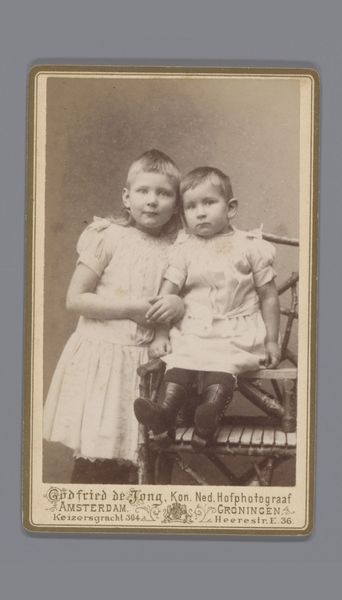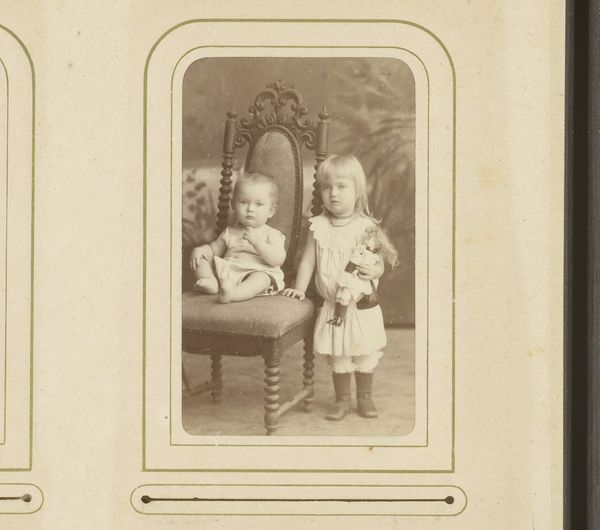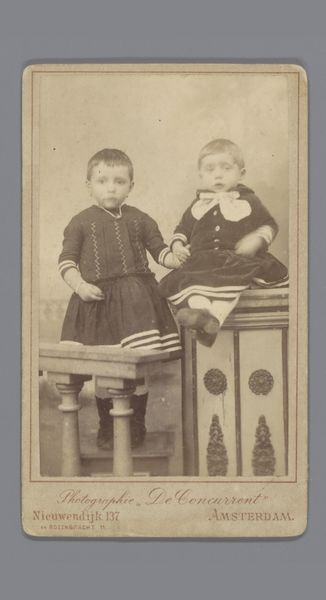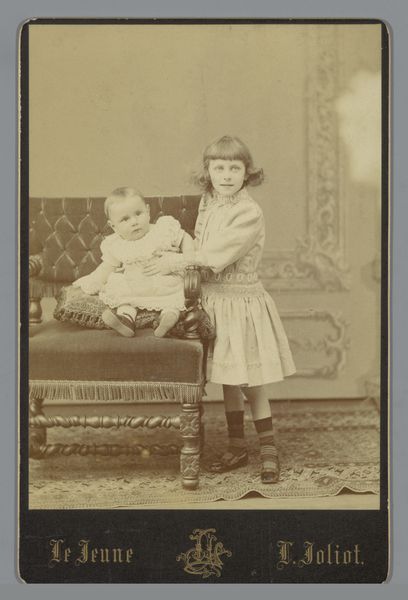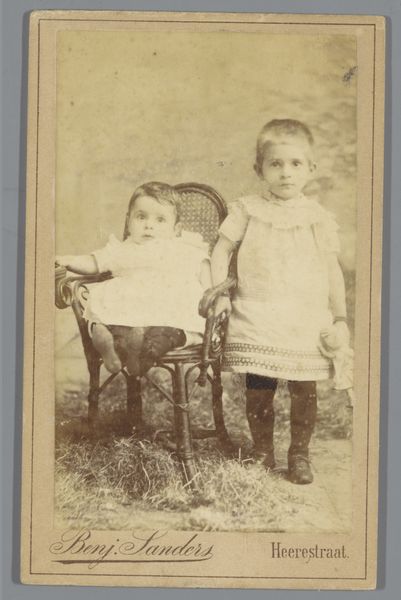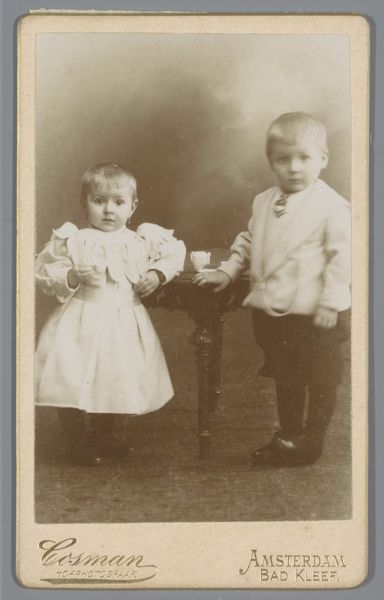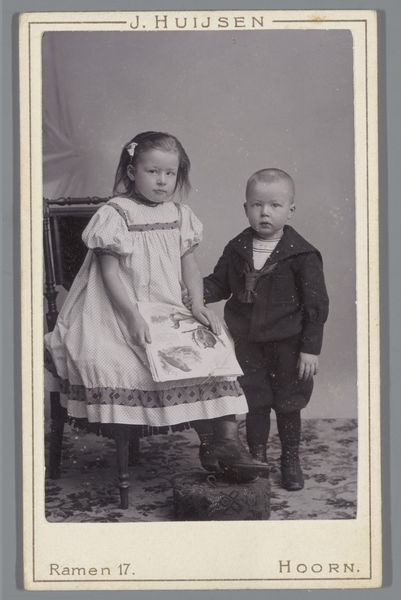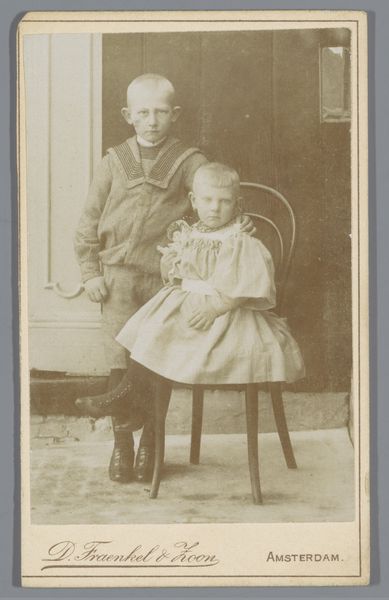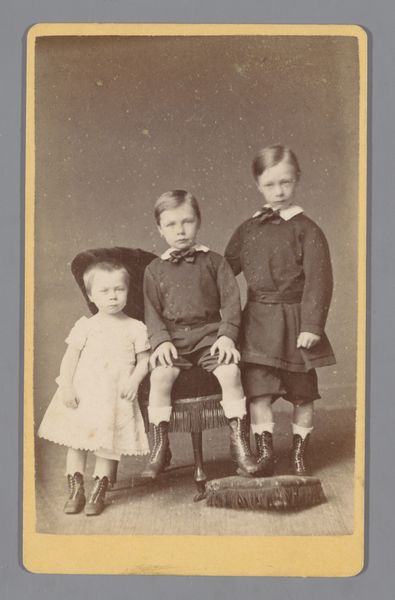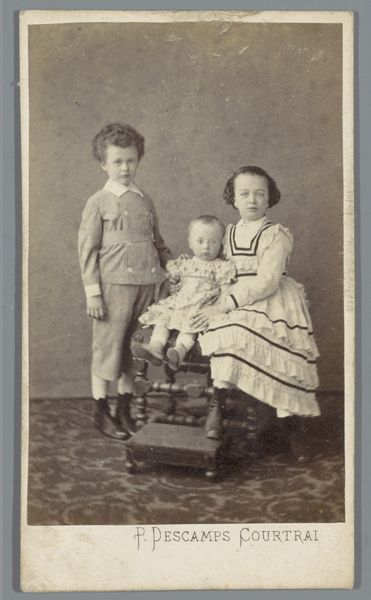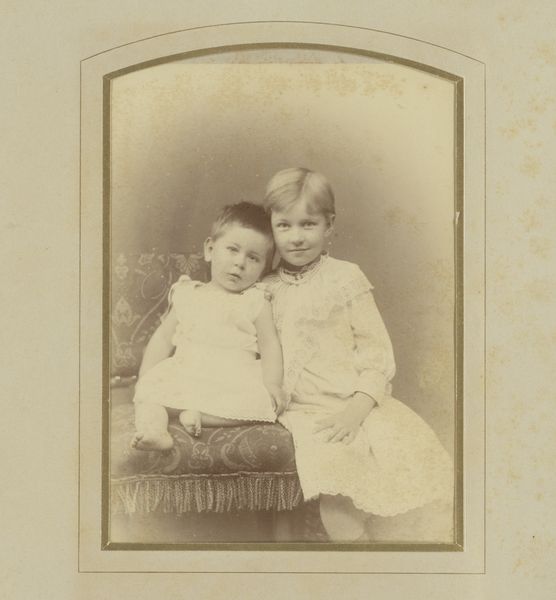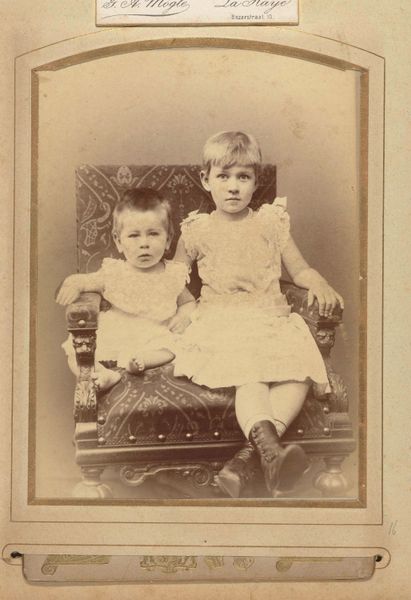
photography, gelatin-silver-print
#
portrait
#
photography
#
historical fashion
#
gelatin-silver-print
#
genre-painting
Dimensions: height 105 mm, width 62 mm
Copyright: Rijks Museum: Open Domain
Editor: Here we have Joseph Maes' gelatin silver print from sometime between 1866 and 1873, "Portrait of two unknown children." What strikes me is the solemnity, even discomfort, etched on these young faces. What's your read on this piece, in its historical moment? Curator: Precisely that discomfort! This photo exists within a history of portraiture rapidly democratizing due to photographic technology. These portraits became powerful tools in constructing and solidifying bourgeois identities. Editor: So, not just capturing likeness, but almost *creating* it? Curator: Indeed! Think about the careful posing, the fashionable clothing. Photography studios sprung up everywhere. These images weren’t simply documents, they were carefully staged performances of social status, even aspiration. How do you think the advent of photographs as keepsakes changes families' views of posterity? Editor: It's interesting how the clothing also restricts their movements – these children almost seem like small adults being molded to behave according to rigid social codes. Does that mean they become commodities within those same status games? Curator: The historical trend of children of wealth posing for professional photographs allowed the public consumption of their private lives. And yes, photographs as tools for family reputation became powerful marketing instruments for the upper class, almost an advertising space. Editor: This discussion has really highlighted how photography went from being simply documentation to a key part of constructing a public persona and class identity. I’ll definitely consider that in my studies going forward! Curator: Glad to broaden your perspective! Photography isn't just about what's *in* the frame, but also who is framing it, and why.
Comments
No comments
Be the first to comment and join the conversation on the ultimate creative platform.
